For over a century, these bunnies have been an Easter tradition in Kansas City
Each spring a fluffle of 6-foot-tall, 200-pound plaster of paris bunnies line the street corners and sidewalks of Country Club Plaza to help bring spring cheer to Kansas City.
For over 100 years, the Plaza Easter bunnies have amazed, confused, and even frightened Kansas Citians when they come out of hibernation. While they’ve changed over the century, they have remained a favorite tradition on the Plaza. This year, the fluffle (yes, that’s the name for a group of bunnies) will return to Country Club Plaza from Friday, March 8 to Monday, April 8.
KC Star reader Barbara Whitt sent a question to KCQ, The Star’s partnership with the Kansas City Public Library where we answer your questions about Kansas City’s history and culture, hoping to learn more about these curious creatures.
She asked: “When did the Easter rabbits first appear on the Country Club Plaza and how did they get their names?”
Sarah Biegelsen, an archivist and special collections librarian at the Kansas City Public Library, dug in to help us find some answers. Here’s what we found:
Meet the bunnies
The bunnies’ origin story begins a bit earlier than their debut on the Plaza. In 1922, the bunnies were created for a display at the Crestwood Shops at 55th St. and Brookside Blvd., according to a 2001 article from The Star.
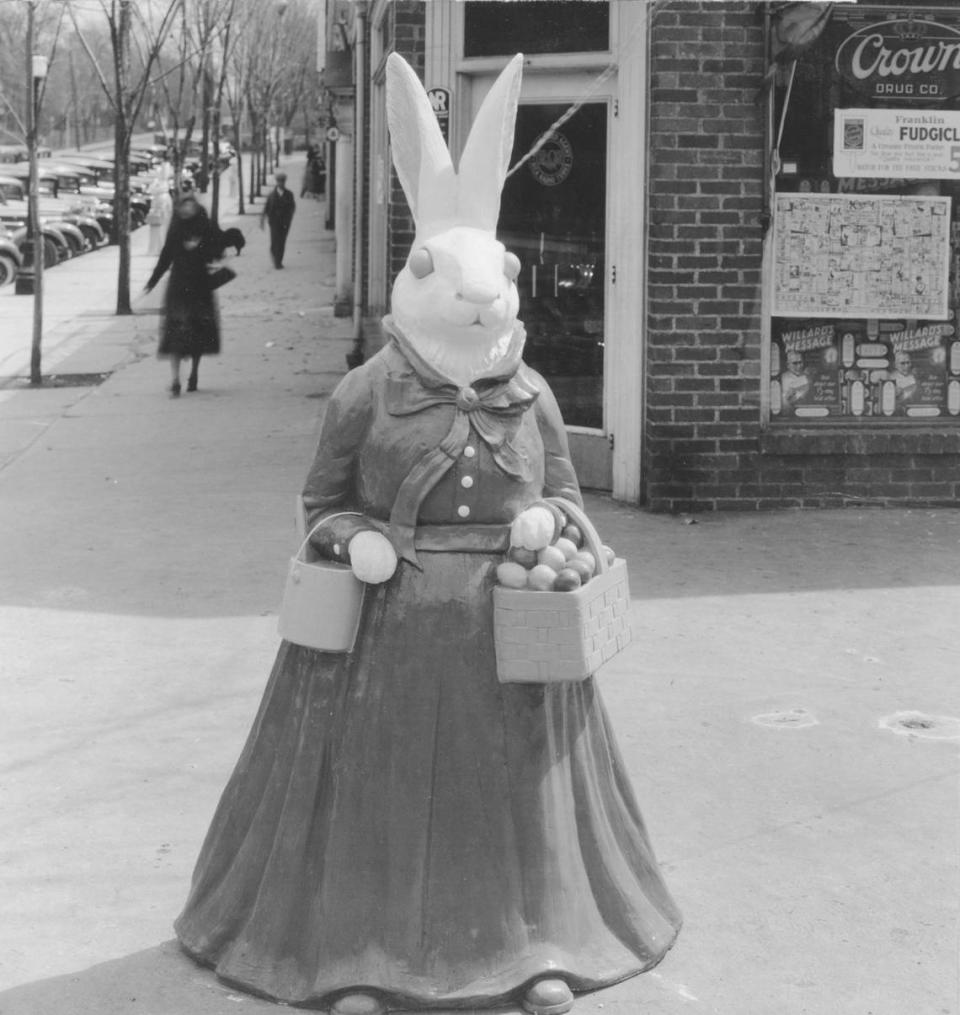
The Plaza bunnies, now more than 100 years old, have a long and sporadically documented history. In researching their past, we looked at books, news articles, archived photos and web sources to find everything related to the Plaza bunnies. While some sources reported different details, such as names and dates, we used both primary and secondary sources to compile the most accurate tale of their storied history.
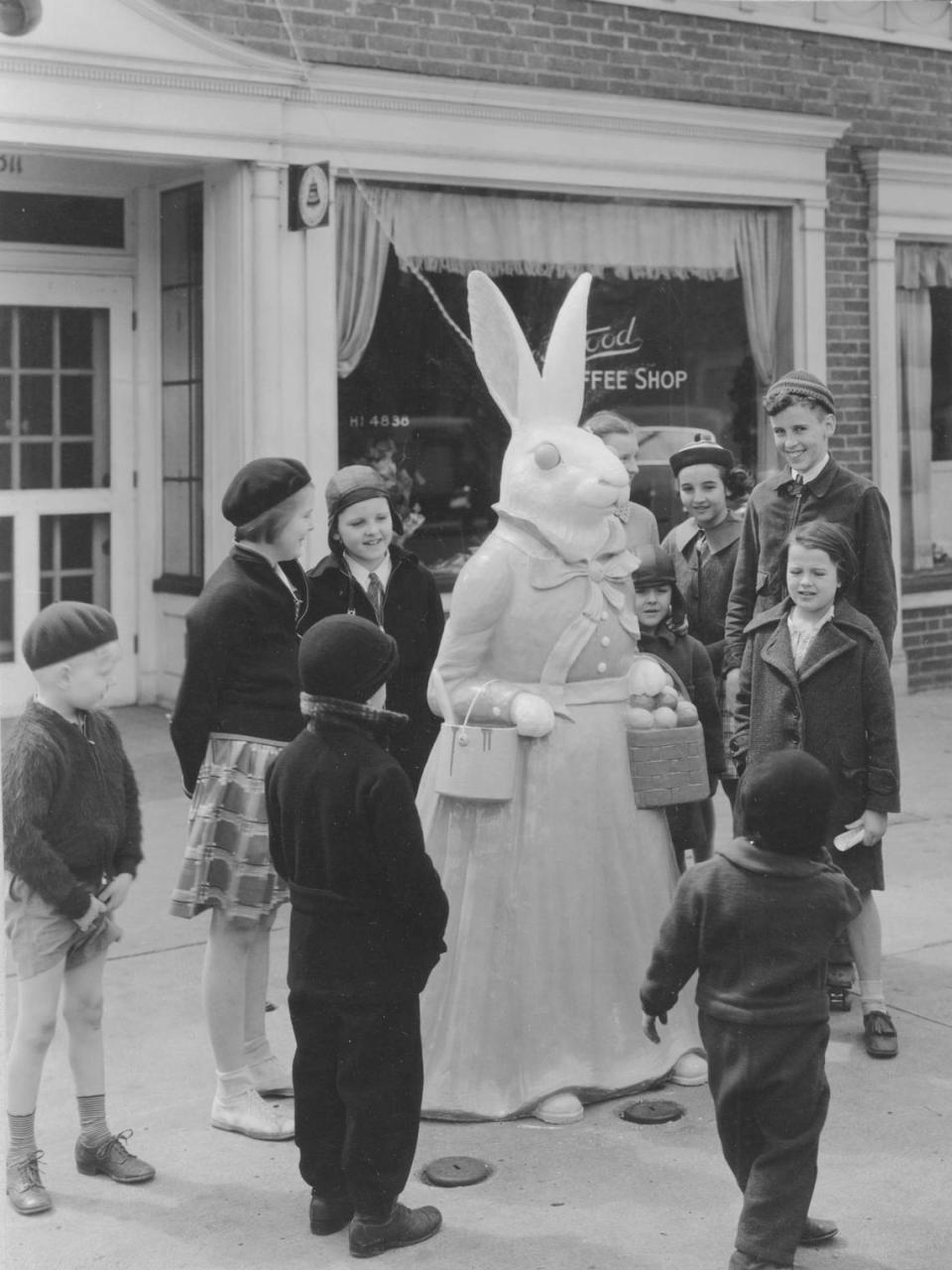
Many sources claim the creator and namesakes of the bunnies are unknown. However, an archived story from The Star in 2001 says the bunnies were originally created in 1922 by Ed Stratemeier, a commercial sculptor for the J.C. Nichols Company, quoting an interview with Stratemeier’s son.
Originally there were 10 bunnies — five boys and five girls — named Kate, Ellyn, Flo, Bess, Sue, Lee, Brian, Peter, Nicholas, and Joe. The bunnies were given their names, which are painted on the shirt collars of each boy and the Easter basket on the arm of each girl, sometime in the 1970s. Flo was eventually renamed, and is now known as Amy. In the late 1990s, Joe disappeared, his whereabouts still unknown, leaving us with nine rabbits.
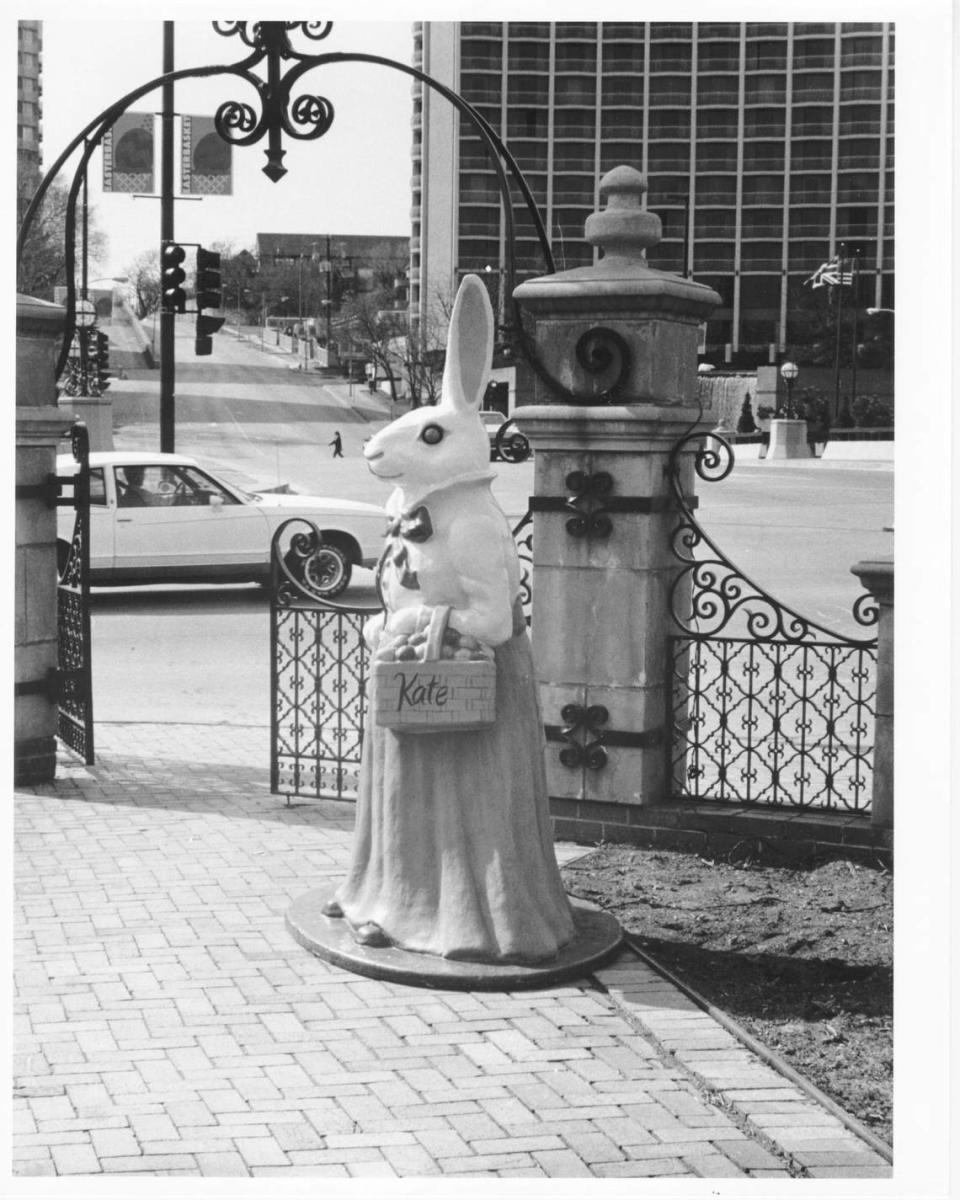
We know with certainty how a few of the bunnies got their names. Two of the boys were named by Frosty Noland, an maintenance employee of the J.C. Nichols company since 1972. The rabbit Nicholas was named after Noland’s son, and Brian was named after his nephew. Flo was given her new name, Amy, after a Plaza maintenance worker’s daughter one year during the annual paint touch-up process. It is not clear exactly when or by whom she was renamed, but the same 1996 Star article that tells us Noland named Nicholas and Brian still refers to her as Flo, so we know Amy got her new identity sometime after that.
Where exactly the other bunnies got their names is less clear. A 1996 article from The Star tells us that most bunnies were named after people who were involved with Country Club Plaza in the 1940s, but there seems to be no record of who are the bunnies’ exact namesakes.
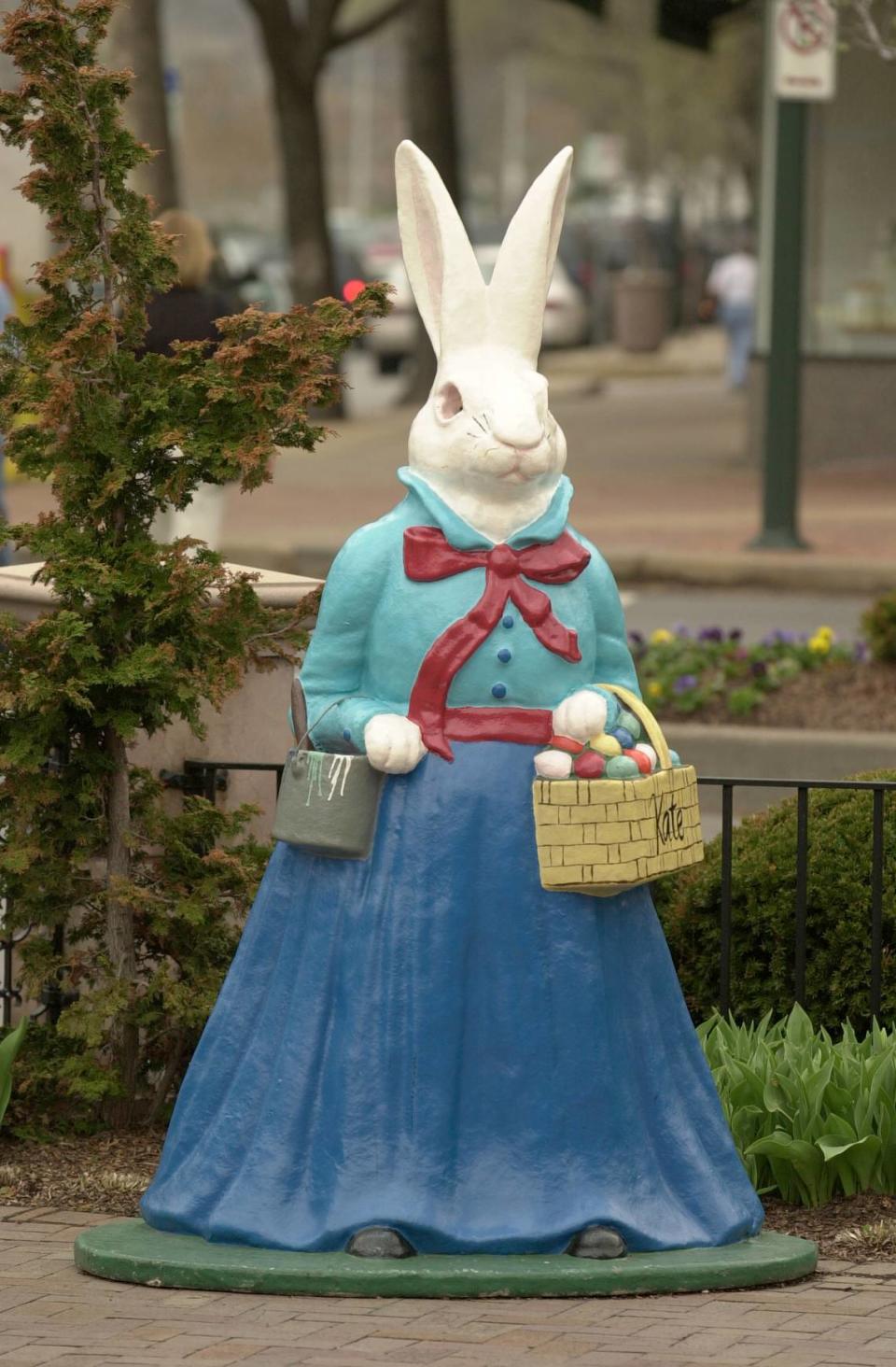
Bunnies on the move
For their first nine years, the bunnies lived at the Crestwood Shops, a then-new J.C. Nichols shopping center in the Brookside neighborhood.
They made their big move to the Country Club Plaza in 1931, inspired by a hope that the bunnies would help raise spirits and battle a sales slump at shops on The Plaza caused by the Great Depression, according to a 2001 article from The Star.
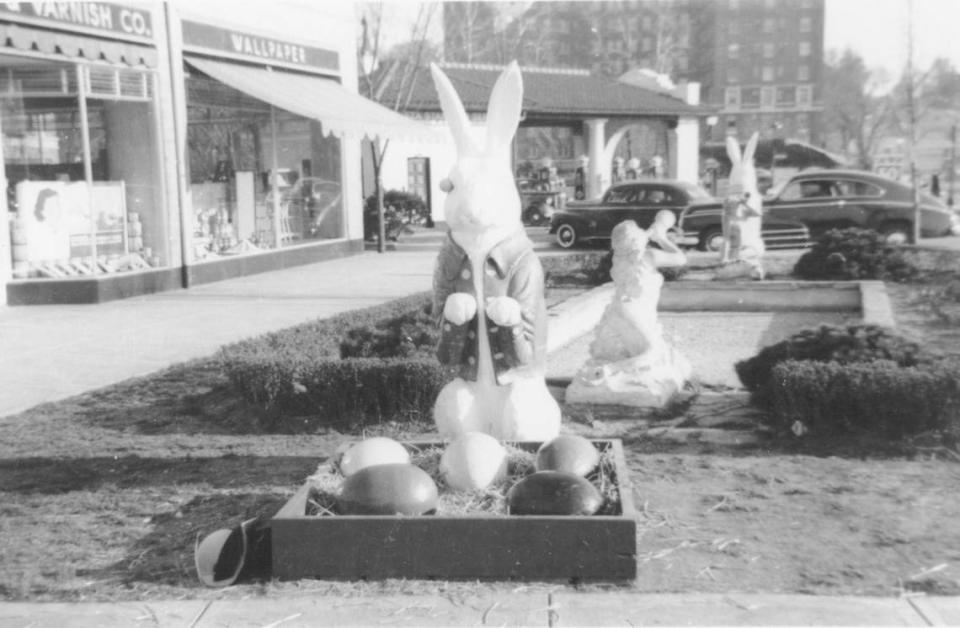
The 1930s marked the beginning of a few favorite Plaza traditions: the bunnies came to the Plaza one year after the first Christmas lighting ceremony and one year before the inauguration of the Plaza Art Fair. While countless traditions have come and gone through the Plaza, these three have remained for nearly a century.
The bunnies were originally crafted from plaster of paris, chicken wire, and camel hair. In 1971 they were coated in fiberglass to help them better withstand the elements and ensure they would be around for generations to come.
Their fiberglass makeover was completed by Jac T. Bowen, a Kansas City artist who is best known for his sculpture, “Sheaves of Wheat,” that was on the east side of the Kansas City Board of Trade building before being relocated to Powell Gardens. Bowen is also the creator of the Wonderland Animals, a menagerie of fiberglass animals — including a turtle, pelican, elephant, camel, kangaroo, swans, horse, and lion — that have accompanied the Plaza bunnies since the 70s.
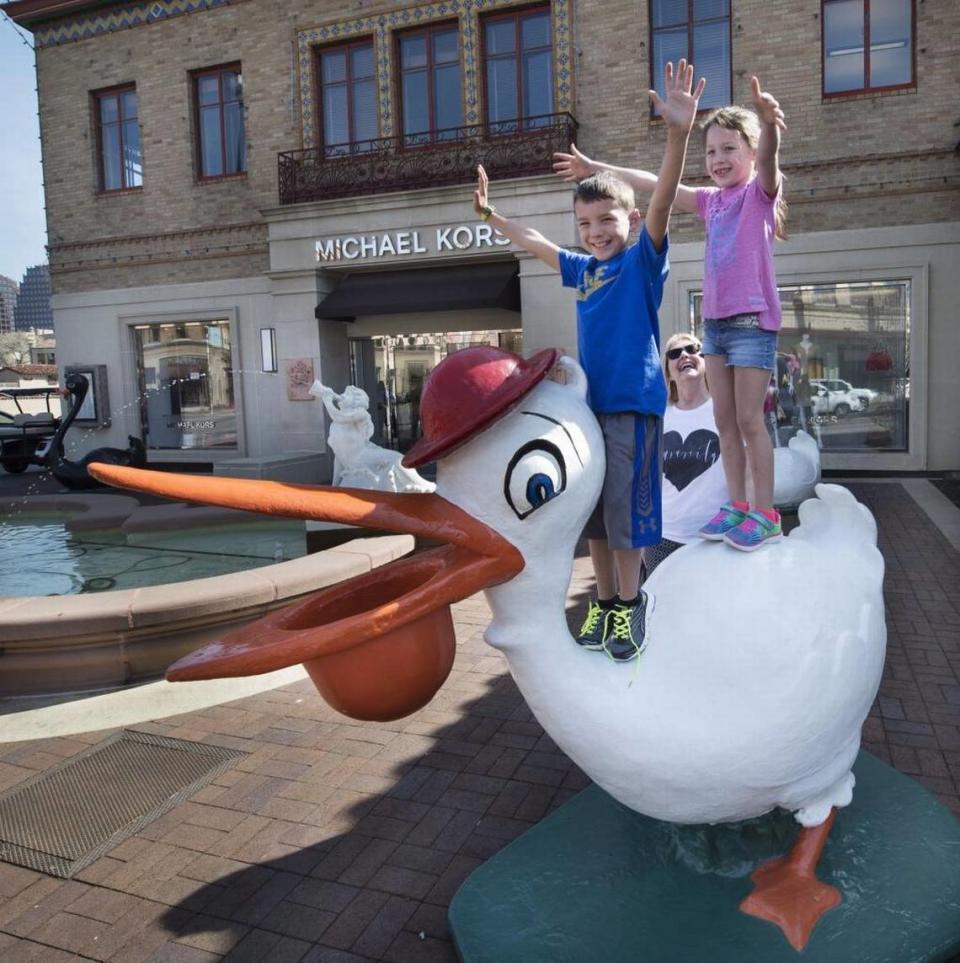
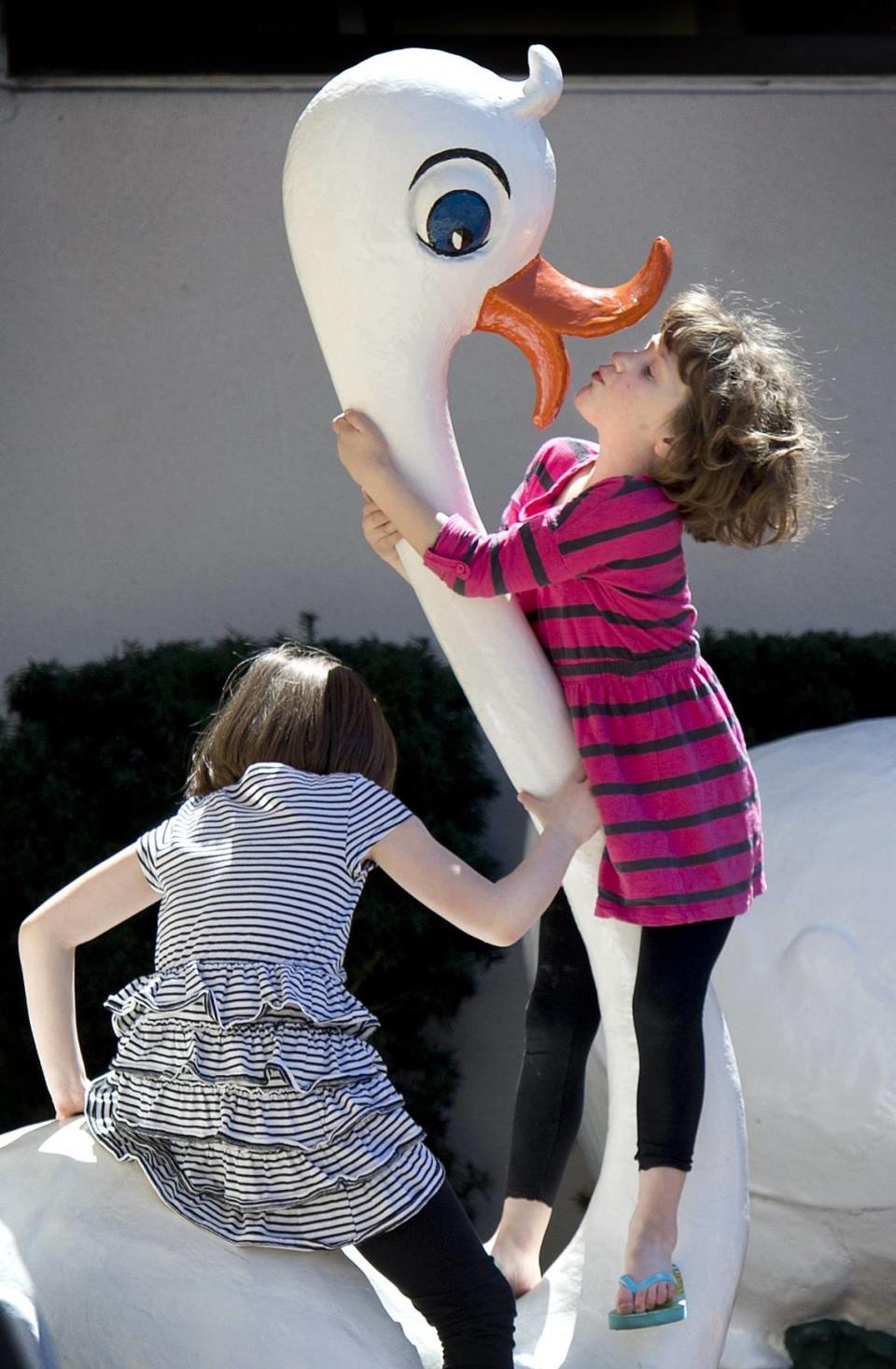
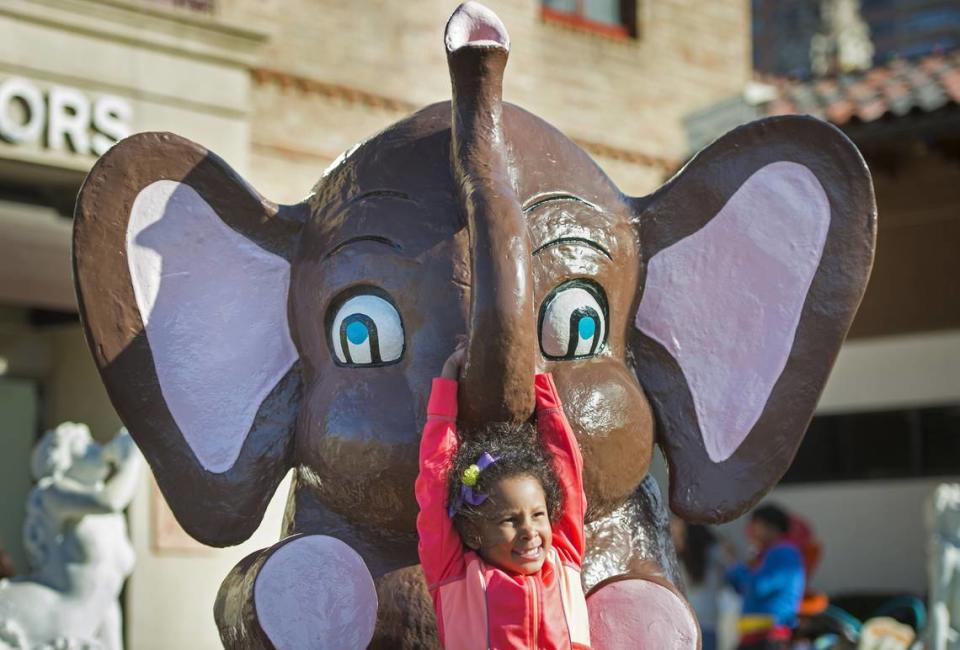
‘Demon Rabbits’
For many years, the bunnies had glowing red eyes, but the light bulbs were removed in 2001 for a few reasons. For one, many people found the bunnies’ red eyes unsettling. Dorri Partain of Northeast News reported in 2022 that many children referred to the red-eyed statues as “demon rabbits.” Furthermore, the antiquated electrical system posed a safety hazard, and the red bulbs often broke or were stolen.
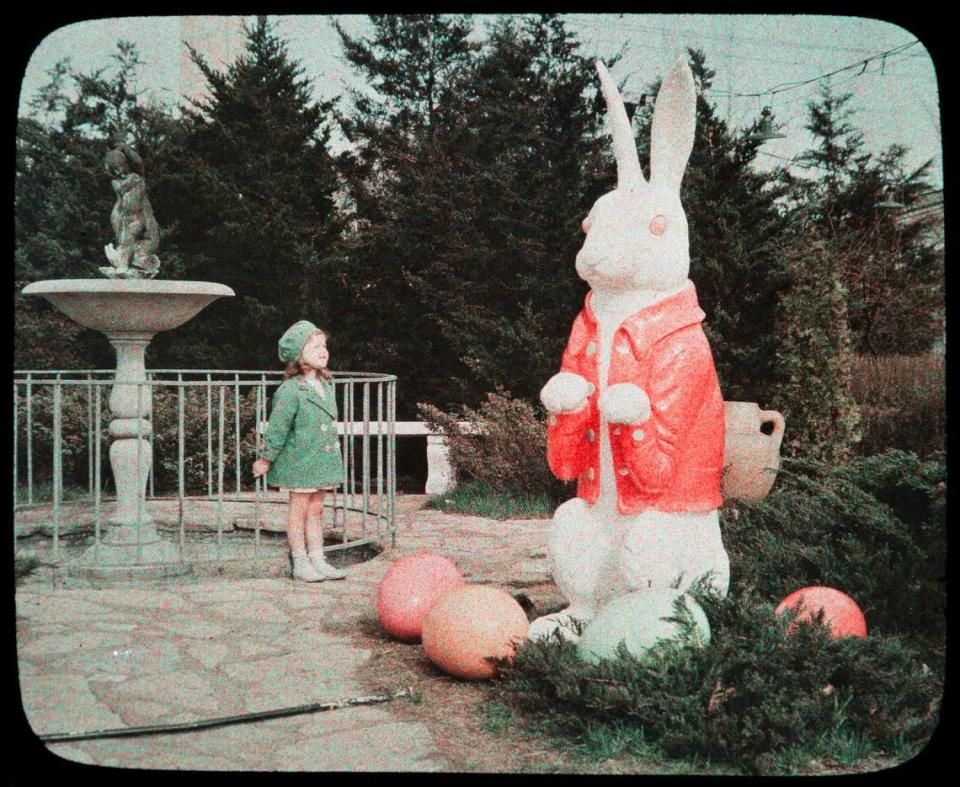
Frosty Noland, the J.C. Nichols’ maintenance employee, told The Star in 2001 that when the bunnies’ eyes were still being illuminated at night the maintenance crew had to replace about 100 stolen or broken bulbs over the course of an average month-long season. That year, the bunnies still had bulbs in their eyes, but they were not illuminated. At the end of the 2001 season, only three bulbs survived. Now, their eyes are made of speckled marbles.
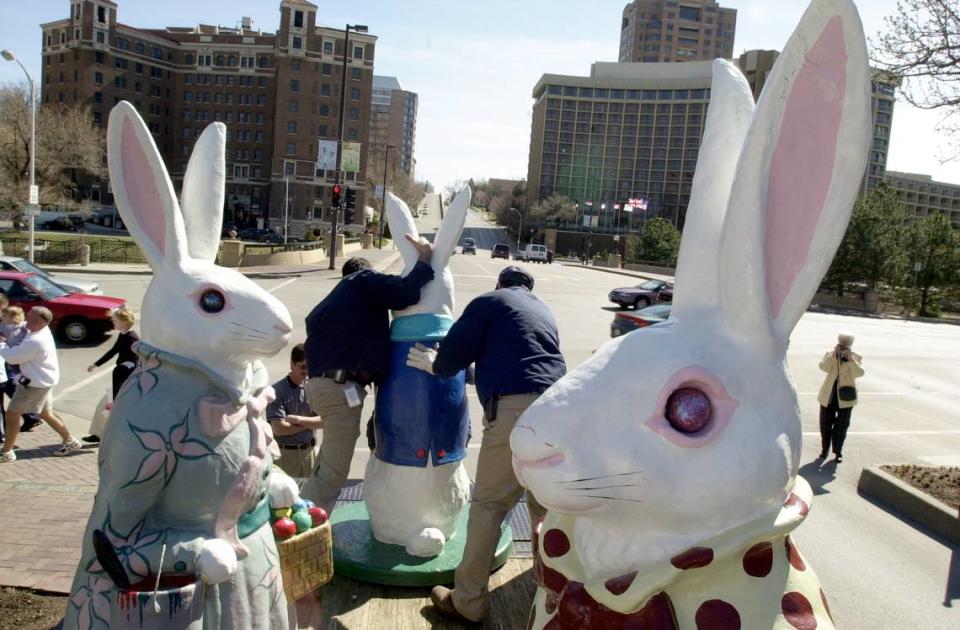
The Search for Joe
One part of the bunnies’ history that still remains a mystery is the disappearance of Joe in the late 90s or early 2000s. All official reports say what happened to Joe is a mystery, but we like to believe he is still living out his days somewhere in the KC metro area. After all, it has been reported that it takes three people to lift one bunny and move it from a truck.
If you know anything about the truth of what happened to Joe, we want to know. Submit a tip below, or send an email to kcq@kcstar.com with your knowledge of Joe’s whereabouts, and help us complete the story of the Plaza bunnies’ history.
Have a question of your own? Ask in the form below or email kcq@kcstar.com.

